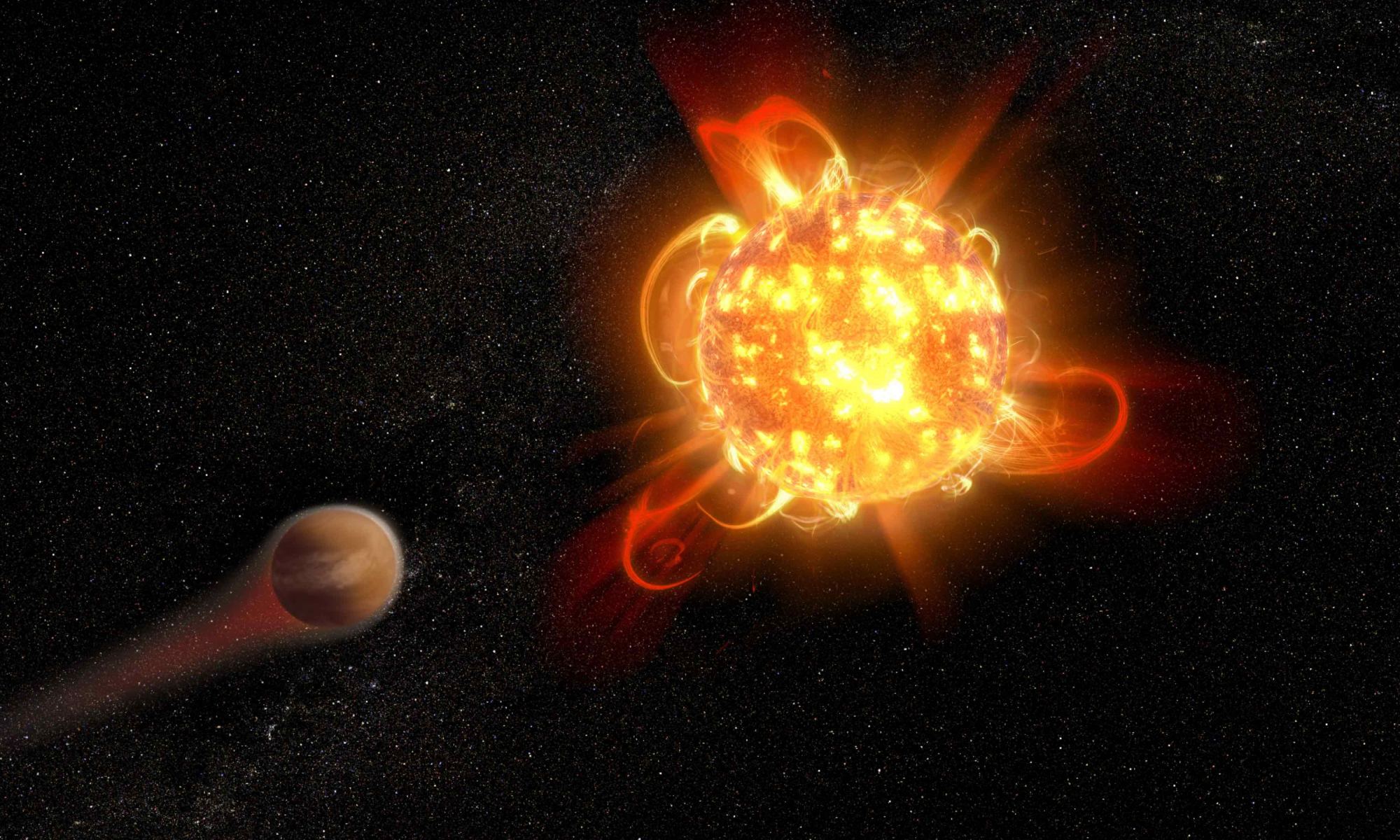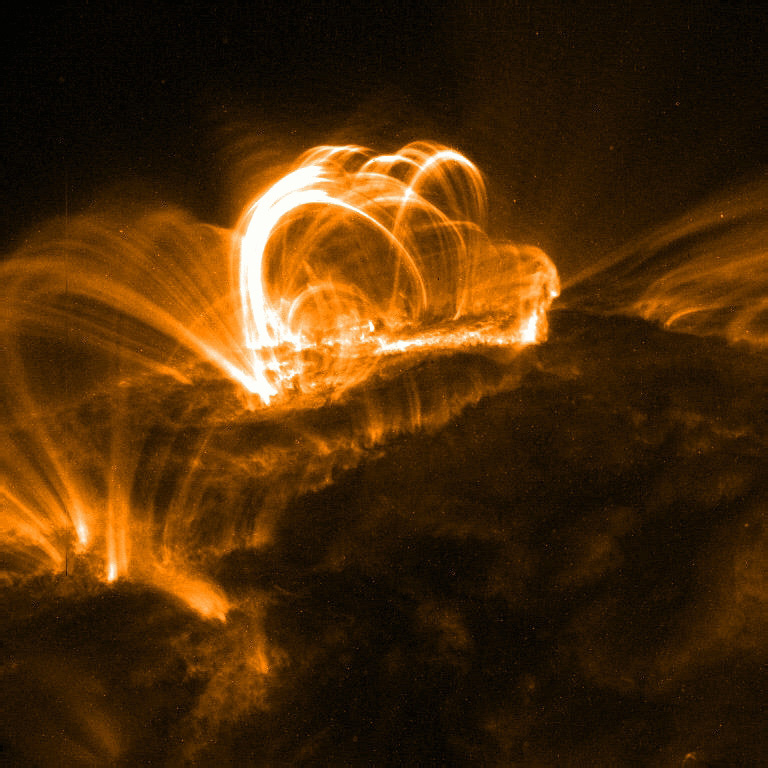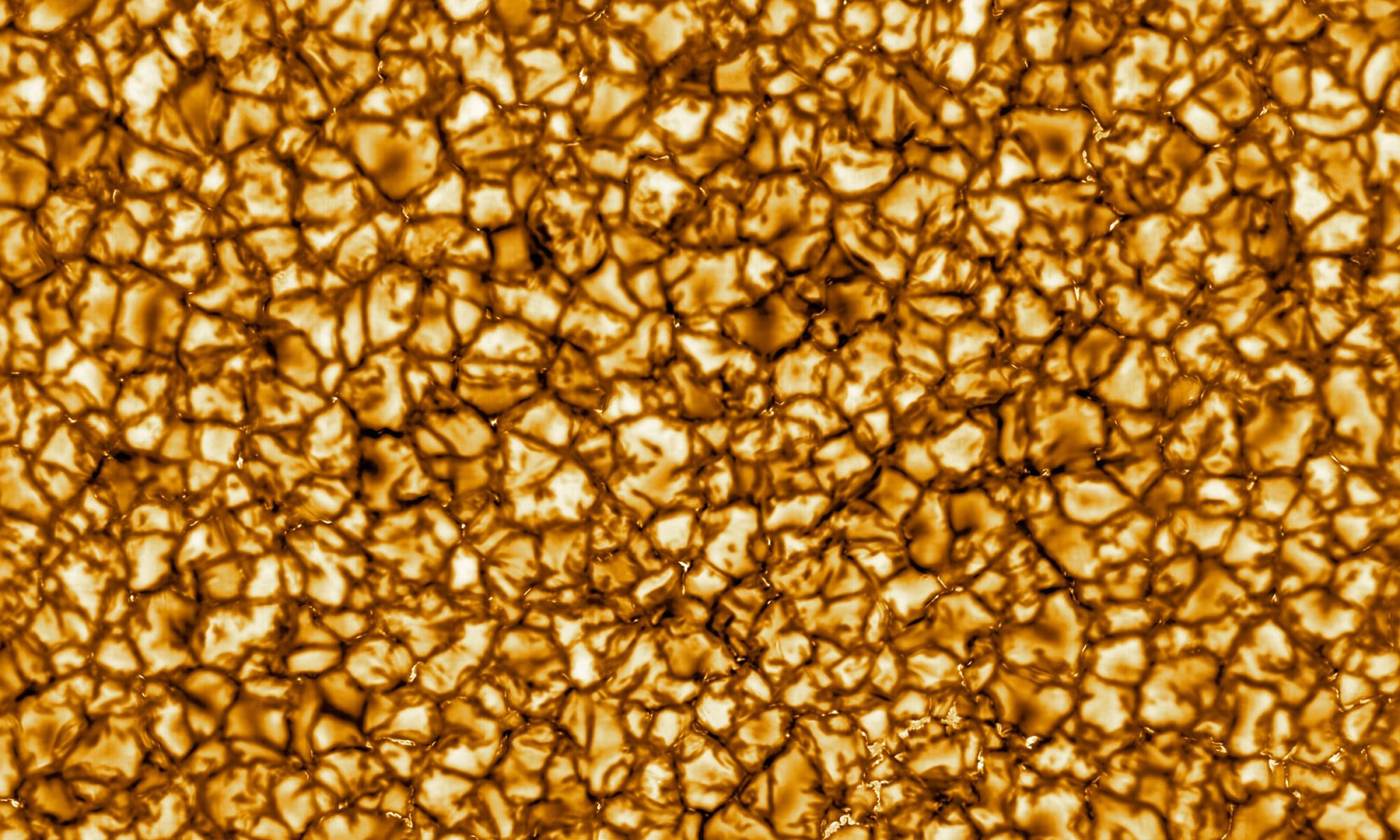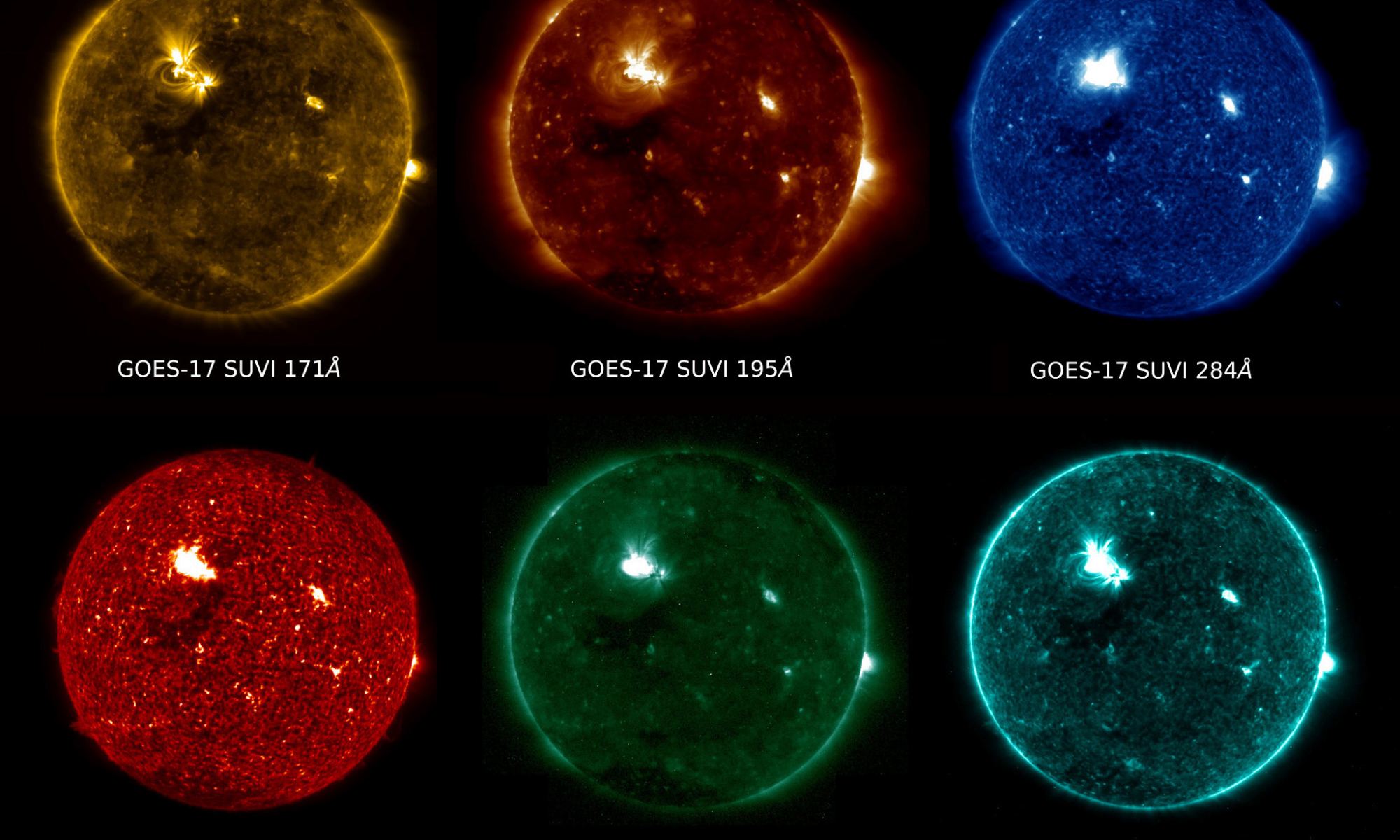The only known life in the universe lives on a mid-size rocky planet that orbits a mid-size yellow star. That makes our planet a bit unusual. While small rocky planets are common in the galaxy, yellow stars are not. Small red dwarf stars are much more typical, making up about 75% of the stars in the Milky Way. This is why most of the potentially habitable exoplanets we’ve discovered orbit red dwarfs.
Continue reading “Good News! Red Dwarfs Blast Their Superflares out the Poles, Sparing Their Planets From Destruction”The Sun is Mellow Yellow Today. Billions of Years Ago? Not So Much
Planetary formation theory has been undergoing a lot of changes recently, with an ever expanding litany of events that can potentially impact it. Everything from gravity to magnetic fields seems to impact this complex process. Now scientists want to add another confounding factor – massive solar flares thousands of times more powerful than the most powerful we have ever observed from the Sun.
Continue reading “The Sun is Mellow Yellow Today. Billions of Years Ago? Not So Much”A Recent Megaflare Shows that Proxima Centauri is not a Nice Place to Live
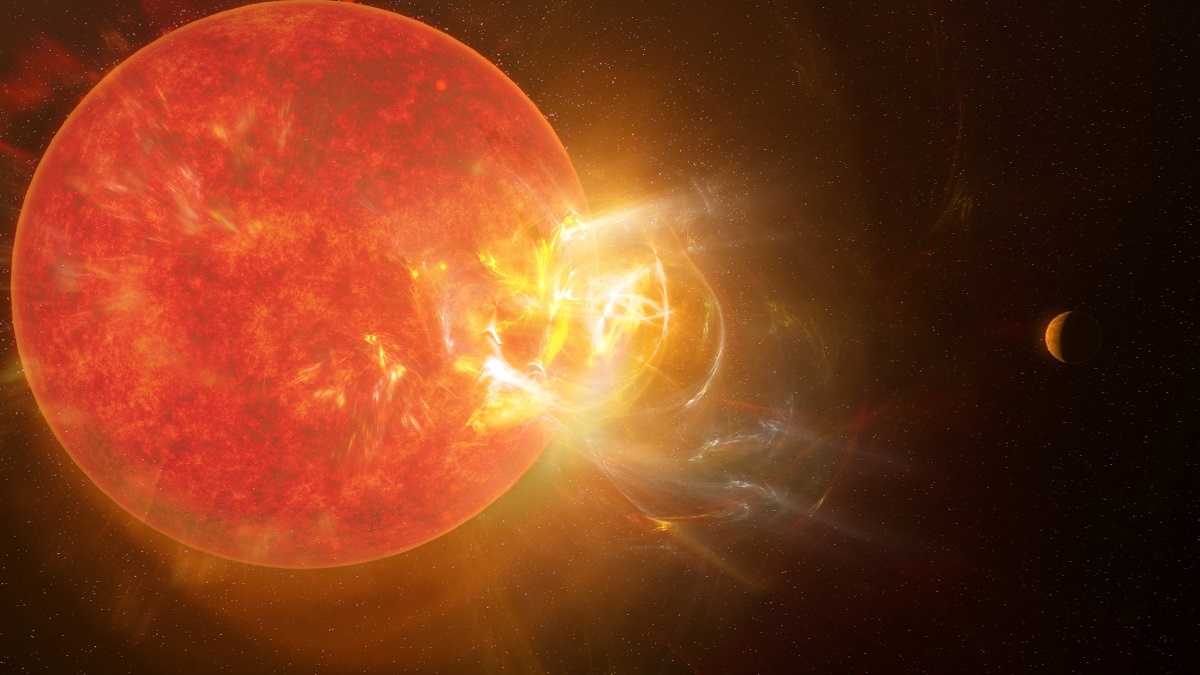
Proxima b, the closest exoplanet to our Solar System, has been a focal point of scientific study since it was first confirmed (in 2016). This terrestrial planet (aka. rocky) orbits Proxima Centauri, an M-type (red dwarf) star located 4.2 light-years beyond our Solar System – and is a part of the Alpha Centauri system. In addition to its proximity and rocky composition, it is also located within its parent star’s habitable zone (HZ).
Until a mission can be sent to this planet (such as Breakthrough Starshot), astrobiologists are forced to postulate about the possibility that life could exist there. Unfortunately, an international campaign that monitored Proxima Centauri for months using nine space- and ground-based telescopes recently spotted an extreme flare coming from the star, one which would have rendered Proxima b uninhabitable.
Continue reading “A Recent Megaflare Shows that Proxima Centauri is not a Nice Place to Live”Researchers Discover the Source of the Sun’s Most Dangerous High-Energy Particles
Sometimes the sun spits out high-energy particles which slam into the Earth, potentially disrupting our sensitive electronics. New research has found that these particles originate in the plasma of the sun itself, and are trapped there by strong magnetic fields. When those fields weaken, the particles blast out.
Continue reading “Researchers Discover the Source of the Sun’s Most Dangerous High-Energy Particles”Do Ripples on the Surface of the Sun tell us that a Flare is Coming?
Flares from the sun are some of the nastiest things in the solar system. When the sun flares, it belches out intense X-ray radiation (and sometimes even worse). Predicting solar flares is a tricky job, and a new research paper sheds light on a possible new technique: looking for telltale ripples in the surface of the sun minutes before the blast comes.
Continue reading “Do Ripples on the Surface of the Sun tell us that a Flare is Coming?”New Solar Model Successfully Predicted Seven of the Sun’s Last Nine Big Flares
Since it launched in 2010, the Solar Dynamics Observatory has helped scientists understand how the Sun’s magnetic field is generated and structured, and what causes solar flares. One of the main goals of the mission was to be able to create forecasts for predicting activity on the Sun.
Using mission data from the past 10 years, SDO scientists have now developed a new model that successfully predicted seven of the Sun’s biggest flares from the last solar cycle, out of a set of nine.
Continue reading “New Solar Model Successfully Predicted Seven of the Sun’s Last Nine Big Flares”The Sun is less active magnetically than other stars
Our Sun is the source of life on Earth. Its calm glow across billions of years has allowed life to evolve and flourish on our world. This does not mean our Sun doesn’t have an active side. We have observed massive solar flares, such as the 1859 Carrington event, which produced northern lights as far south as the Caribbean, and drove electrical currents in telegraph lines. If such a flare occurred in Earth’s direction today, it would devastate our electrical infrastructure. But fortunately for us, the Sun is mostly calm. Unusually calm when compared to other stars.
Continue reading “The Sun is less active magnetically than other stars”Without a Magnetosphere, Planets Orbiting Flare Stars Don’t Stand a Chance
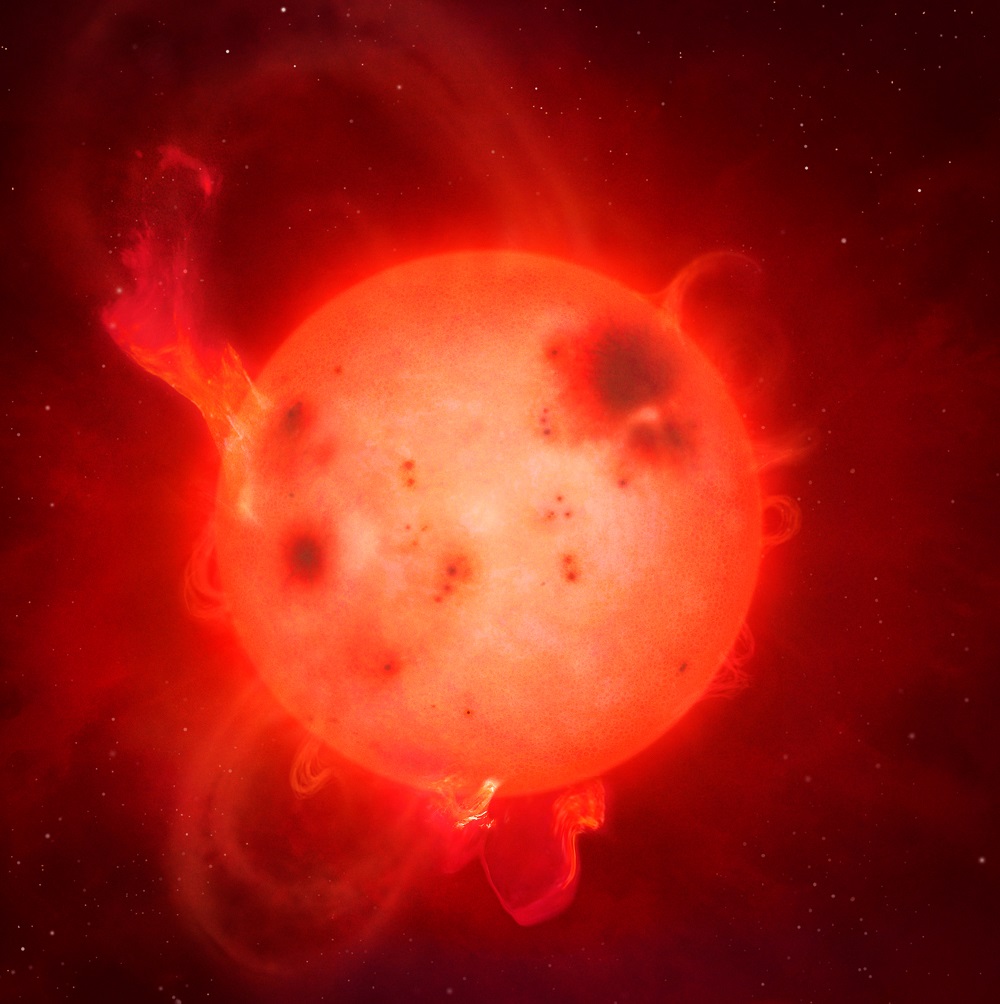
Earthlings are fortunate. Our planet has a robust magnetic shield. Without out magnetosphere, the Sun’s radiation would’ve probably ended life on Earth before it even got going. And our Sun is rather tame, in stellar terms.
What’s it like for exoplanets orbiting more active stars?
Continue reading “Without a Magnetosphere, Planets Orbiting Flare Stars Don’t Stand a Chance”Astronomers See an Enormous Coronal Mass Ejection… On Another Star!

For the first time ever, astronomers have witnessed a coronal mass ejection (CME) on a star other than our very own Sun. The star, named HR 9024 (and also known as OU Andromeda,) is about 455 light years away, in the constellation Andromeda. It’s an active, variable star with a strong magnetic field, which astronomers say may cause CMEs.
“This result, never achieved before, confirms that our understanding of the main phenomena that occur in flares is solid.”
Costanza Argiroffi, Lead Author, University of Palermo, and Associate Researcher at the National Institute for Astrophysics in Italy.
Proxima Centauri Just Released a Flare so Powerful it was Visible to the Unaided Eye. Planets There Would Get Scorched
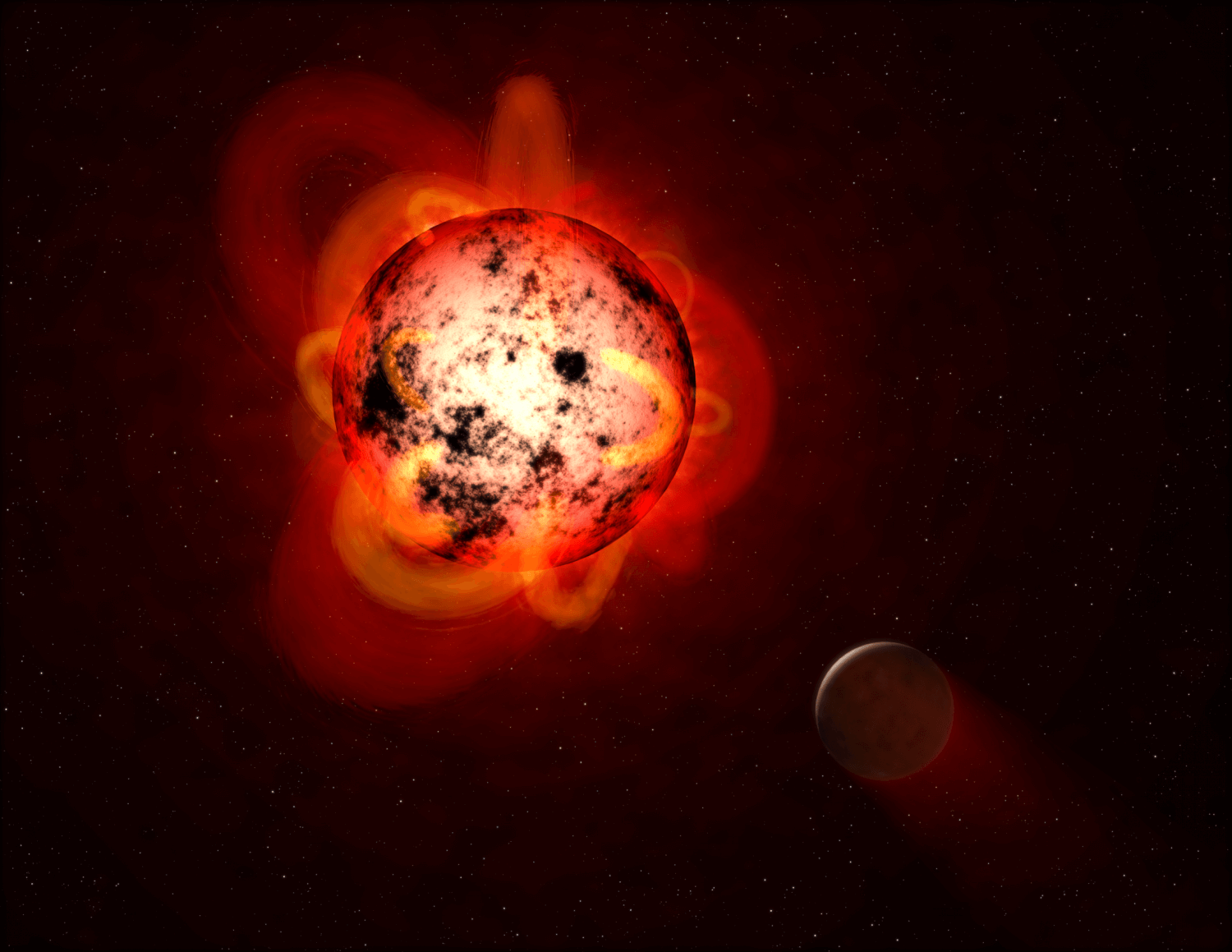
Since its discovery was announced in August of 2016, Proxima b has been an endless source of wonder and the target of many scientific studies. In addition to being the closest extra-solar planet to our Solar System, this terrestrial planet also orbits within Proxima Centauri’s circumstellar habitable zone (aka. “Goldilocks Zone”). As a result, scientists have naturally sought to determine if this planet could actually be home to extra-terrestial life.
Many of these studies have been focused on whether or not Proxima b could retain an atmosphere and liquid water on its surface in light of the fact that it orbits an M-type (red dwarf) star. Unfortunately, many of these studies have revealed that this is not likely due to flare activity. According to a new study by an international team of scientists, Proxima Centauri released a superflare that was so powerful, it would have been lethal to any life as we know it.
The study, titled “The First Naked-Eye Superflare Detected from Proxima Centauri“, recently appeared online. The team was led by Howard Ward, a PhD candidate in physics and astronomy at the UNC Chapel Hill, with additional members from the NASA Goddard Space Flight Center, the University of Washington, the University of Colorado, the University of Barcelona and the School of Earth and Space Exploration at Arizona State University.
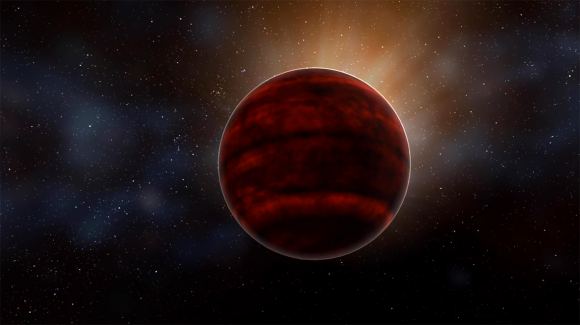
As they indicate in their study, solar flare activity would be one of the greatest potential threats to planetary habitability in a system like Proxima Centauri. As they explain:
“[W]hile ozone in an Earth-like planet’s atmosphere can shield the planet from the intense UV flux associated with a single superflare, the atmospheric ozone recovery time after a superflare is on the order of years. A sufficiently high flare rate can therefore permanently prevent the formation of a protective ozone layer, leading to UV radiation levels on the surface which are beyond what some of the hardiest-known organisms can survive.”
In addition stellar flares, quiescent X-ray emissions and UV flux from a red dwarf star can would be capable of stripping planetary atmospheres over the course of several billion years. And while multiple studies have been conducted that have explored low- and moderate-energy flare events on Proxima, only one high-energy event has even been observed.
This occurred on March of 2016, when Proxima Centauri emitted a superflare that was so bright, it was visible to the naked eye. This flare was observed by the Evryscope, an array of telescopes – funded through the National Science Foundation‘s Advanced Technologies and Instrumentation (ATI) and Faculty Early Career Development (CAREER) programs – that is pointed at every part of the accessible sky simultaneously and continuously.

As the team indicates in their study, the March 2016 superflare was the first to be observered from Proxima Centauri, and was rather powerful:
“In March 2016 the Evryscope detected the first-known Proxima superflare. The superflare had a bolometric energy of 10^33.5 erg, ~10× larger than any previously-detected flare from Proxima, and 30×larger than any optically measured Proxima flare. The event briefly increased Proxima’s visible-light emission by a factor of 38× averaged over the Evryscope’s 2-minute cadence, or ~68× at the cadence of the human eye. Although no M-dwarfs are usually visible to the naked-eye, Proxima briefly became a magnitude-6.8 star during this superflare, visible to dark-site naked-eye observers.”
The superflare coincided with the three-month Pale Red Dot campaign, which was responsible for first revealing the existence of Proxima b. While monitoring the star with the HARPS spectrograph – which is part of the 3.6 m telescope at the ESO’s La Silla Observatory in Chile – the campaign team also obtaining spectra on March 18th, 08:59 UT (just 27 minutes after the flare peaked at 08:32 UT).
The team also noted that over the last two years, the Evryscope has recorded 23 other large Proxima flares, ranging in energy from 10^30.6 erg to 10^32.4 erg. Coupled with rates of a single superflare detection, they predict that at least five superflares occur each year. They then combined this data with the high-resolution HARPS spectroscopy to constrain the superflare’s UV spectrum and any associated coronal mass ejections.
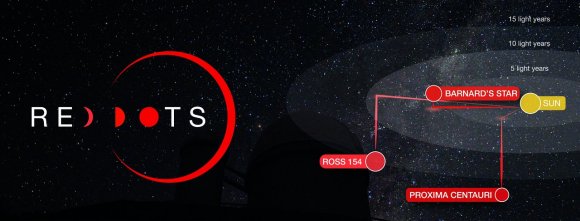
The team then used the HARPS spectra and the Evryscope flare rates to create a model to determine what effects this star would have on a nitrogen-oxygen atmosphere. This included how long the planet’s protective ozone layer would be able to withstand the blasts, and what effect regular exposure to radiation would have on terrestrial organisms.
“[T]he repeated flaring is sufficient to reduce the ozone of an Earth-like atmosphere by 90% within five years. We estimate complete depletion occurs within several hundred kyr. The UV light produced by the Evryscope superflare therefore reached the surface with ~100× the intensity required to kill simple UV-hardy microorganisms, suggesting that life would struggle to survive in the areas of Proxima b exposed to these flares.”
Essentially, this and other studies have concluded that any planets orbiting Proxima Centauri would not be habitable for very long, and likely became lifeless balls of rock a long time ago. But beyond our closest neighboring star system, this study also has implications for other M-type star systems. As they explain, red dwarf stars are the most common in our galaxy – roughly 75% of the population – and two-thirds of these stars experience active flare activity.
As such, measuring the impact that superflares have on these worlds will be a necessary component to determining whether or not exoplanets found by future missions are habitable. Looking ahead, the team hopes to use the Evryscope to examine other star systems, particularly those that are targets for the upcoming Transiting Exoplanet Survey Satellite (TESS) mission.

“Beyond Proxima, Evryscope has already performed similar long-term high-cadence monitoring of every other Southern TESS planet-search target, and will therefore be able to measure the habitability impact of stellar activity for all Southern planetsearch-target M-dwarfs,” they write. “In conjunction with coronal-mass-ejection searches from long- wavelength radio arrays like the [Long Wavelength Array], the Evryscope will constrain the long-term atmospheric effects of this extreme stellar activity.”
For those who hoped that humanity might find evidence of extra-terrestrial life in their lifetimes, this latest study is certainly a letdown. It’s also disappointing considering that in addition to being the most common type of star in the Universe, some research indicates that red dwarf stars may be the most likely place to find terrestrial planets. However, even if two-thirds of these stars are active, that still leaves us with billions of possibilities.
It is also important to note that these studies help ensure that we can determine which exoplanets are potentially habitable with greater accuracy. In the end, that will be the most important factor when it comes time to decide which of these systems we might try to explore directly. And if this news has got you down, just remember the worlds of the immortal Carl Sagan:
“The universe is a pretty big place. If it’s just us, seems like an awful waste of space.”
Further Reading: arXiv

